#intersex cinema
Photo
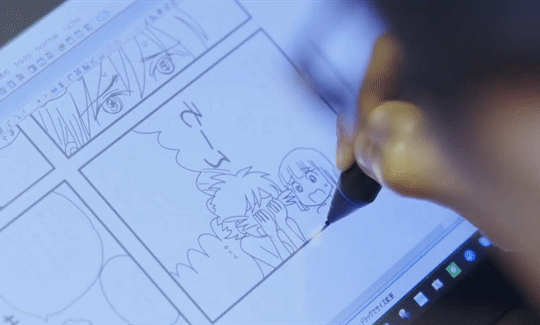
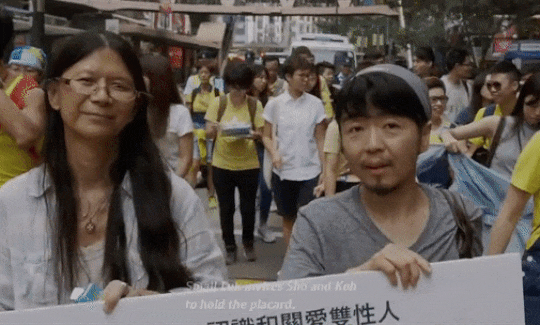



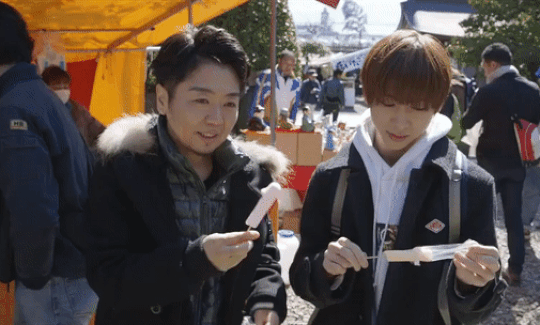

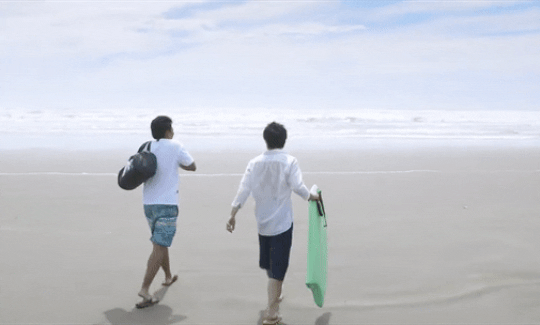

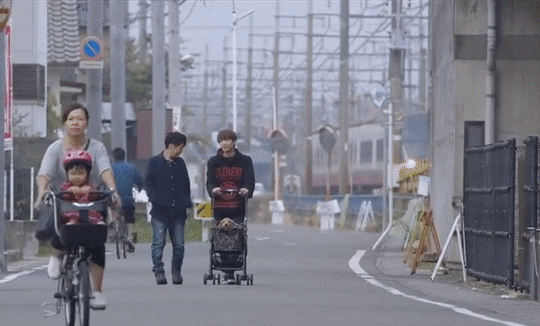
性別が、ない!インターセックス漫画家のクィアな日々 | NO GENDER! THE QUEER LIFE OF AN INTERSEX MANGA ARTIST (2018)
dir. Shôgo Watanabe
Up to the age 30, Sho Arai lived as a woman, but was found to be intersex after chromosome testing. Sho now lives as neither man nor woman, and creates essay manga based on the changes their body has undergone. Sho has been dispatching messages on how to live to young readers who are also struggling with their gender identity. Sho lives with their assistant, Koh, a young gay man who they met 10 years ago at a vocational school where they teaches manga. Koh has himself debuted as a manga artist and come out publicly. When Sho reveals the inner state of their mind on camera, their relationship moves in an unexpected direction.
(link in title)
#lgbt cinema#intersex cinema#no gender! the queer life of an intersex manga artist#japanese cinema#lgbt#intersex#japan#documentary#lgbt movie#intersex movies#japanese movie#lgbt film#intersex film#japanese film#lgbt media#intersex media#queer cinema#asian cinema#east asian cinema#shôgo watanabe#sho arai#2018#2010s#2010s movies#2010s cinema#2010s films
210 notes
·
View notes
Text
i just watched it and I can't believe the 1985 movie Enemy Mine isn't more popular on Tumblr. it's what you freaks live for.
it seems like a normal alien movie at first but it gets wild. it's about a human and a member of the alien species humans are at war with getting stranded together on a deserted planet and overcoming their differences.
it's also contains...
an enemies to friends to partners storyline
intersex and nonbinary aliens, as well as other cool alien life
feral single fathers
commentary on discrimination (especially ethnic and racial) and colonisation
mikey mouse as humanity's supreme scholar
and last but DEFINITELY not least...
canon mpreg
please go watch it. now. it is for the queers and the monsterfuckers and we need to revive it. the gay stuff is technically not canonical but it is sure close to it.
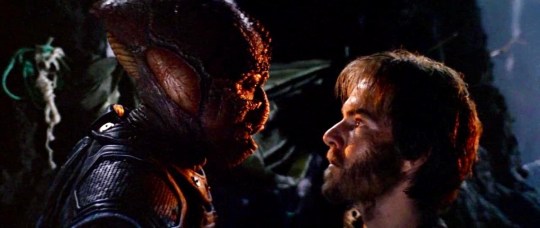
PLEASE I BEG YOU
#enemy mine#movies#queer movie recommendations#gay#cinema#scifi#science fiction#aliens#intersex#speculative biology#gay media
172 notes
·
View notes
Text
My list of LGBTQ+ films I’ve seen has hit 666 so now I can never watch another gay movie again 😞
#I left off the I and A because I’ve not seen any films with canonically ace or intersex characters yet#queer cinema#tbf some of them are films with side characters so I could bump them off the list lol#but only side characters who are somewhat significant imho so I won’t actually remove them#if I filter out shorts I’m at 568 so I can watch another 98 features I guess :P
1 note
·
View note
Text
girl stroke boy (1971)
Jo: Sex isn't what you wear. It's not being face up or face down in bed. Nowadays it's simply a matter of personality. Mr. Mason you must see it all the time in school.
Laurie's father: Sex? It's not part of the curriculum...
Jo: Look, who gives a hell if it's a boy or a girl. We're all a bit of both aren't we, Mrs. Mason? I bet you don't get many absolute heteros in your school.
Laurie's father: [unintelligible]. Sometimes it's only when they get their insurance cards that you do discover what sex they are.
Jo: Doesn't it shock you that the sexes are coming closer together?
Laurie's father: Young people will go on experimenting, my dear, whether my eyebrows go up or down.
Laurie's mother: In my day the excitement was in guessing which man would ask you to dance, not in guessing which were the men. Nowadays I guess it's very chic to boast that some of one's best men friends are women. i find it extremely... decadent. Let me remind you it was my generation that produced Jacqueline Kennedy, Terence Rattigan, and Agatha Christie!
#queer cinema#im watching movies#im watching girl stroke boy#the amount of genderbending happening in this script because the language isnt developed#the conflation of gender and sex and sexuality#of course nobody knows words like intersex or trans in the story it seems
1 note
·
View note
Text
Sundance 2024 Film Review: Ponyboi ★★★★
Director Esteban Arango returns to Sundance with his riveting, stylish, and kinetic sophomore feature Ponyboi, which just received its world premiere in the US Dramatic Competition at the 40th edition of the festival. Written, produced by, and starring queer intersex nonbinary Latinx model, actor, and activist River Gallo, the seeds of the film began in an NYU stage production, before becoming a…

View On WordPress
#dylan o&039;brian ponyboi#Indya Moore#indya more ponyboi#intersex#intersex charcer#James Kleinmann#jari jones ponyboi#lgbt#lgbtq#lgbtq film#nonbinary#nonbinary character#ponyboi reiver gallo#ponyboi review#ponyboi sundance review#queer#Queer cinema#queer film#River Gallo#river gallo ponyboi#sundance film review ponyboi#sundance review ponyboi#sundance us dramtic comeptition ponyboi#The Queer Review#trans
0 notes
Text
Intro post!!!

ABOUT ME
Hi I’m Rosemary! I’m ok with Rose, Mary, and Blair too!! I’m 19 [12.20], i go by she/it pronouns and I’m intersex transneufem and… bi? lesbian? who knows. A mystery to unfold~ /lhj [no he/him or masc language referring to me please (ᵕ̣̣̣̣̣̣﹏ᵕ̣̣̣̣̣̣)]
I mainly will just repost stuff. I’ll try to be more active since I also wanna post my art, but if you’re interested in just strictly art my main is on Instagram. I’m mostly an oc artist, but I do dabble in fanart every other blue moon. I use Clip Studio Paint and a huion inspiroy tablet. If you’re interested in seeing all other stuff about me, my art, blah blah and also my byf/dni, please read my carrd.
MAIN INTERESTS
bold: special interests
Also side note I won’t be adding hyperfixations (like indicators) because they change a lot, read the carrd above if you’re interested :3
Horror media, abrahamic religions (not religious myself, just interested in the history), gemology, art, music, fragrances/scents, OFF (the game), fallout (3, nv, 4), persona (3, 4, 5, 5r), minecraft, roblox, silent hill, resident evil, evil within (not as into it as i used to be), cry of fear, pusheen, cats, my ocs.
Some of my favorite ccs/artists are Night Mind, Manlybadasshero, Saint Motel, Deftones, System Of a Down, $uicideboy$, Puzzle, The Garden, Two Door Cinema Club, (old) Imagine Dragons, etc etc I could blab on forever.
ACCOUNT GIST
Basically I wanna use this as another main art platform if I can. I wanna show off my ocs more. If possible I’ll make a thing to introduce my main cast :3 but just a run down I have 4 main ocs and a few side ocs!!! if you’re interested in knowing more i have an oc carrd you can refer to :3 and i have a toyhouse (it’s bloodywinter it won’t let me link gah!!!) too!
feel free to follow and be friends :3 i don’t bite i prommy
#artists on tumblr#art#artist#sapphic#intersex#oc artist#oc#ocs#my ocs#how to use tumblr#gah!!!#bisexual#lesbian#idk#introduction#intro post
3 notes
·
View notes
Photo

Ive been wanting to draw for myself a lot more, so I decided to set myself a drawing challenge for Pride Month!!!
I’m sharing this challenge in case anybody else would like to jump in. The goal is to (roughly) use the colors of each flag to create an artwork for each day. Slight variations in color are allowed, but keep the spirit of the flag. I added a prompt to each day as well but that is completely optional. Otherwise, there are no other rules! If you decide to join tag your work with #PalettesofPride2023
Transcript under the cut
Palletes of Pride 2023
*Make a drawing using only the colors of each day’s flag.
(At least approximately)
*The additional Prompts are optional
*Tag your work with #PalettesofPride2023
1. Freebie! - 9-Stripe
2. Pond - Polysexual
3. Cave - Aromantic
4. Cafè - Lesbian
5. Garden - Genderqueer
6. City - Demigender
7. Bar - Genderfluid
8. Campfire - Bear
9. Arcade - Pansexual
10. Mountain - Asexual
11. Bakery - Transgender
12. Market - Bisexual
13. Ocean - Gay
14. Concert - Non-Binary
15. Cinema - Leather
16. Theme Park - Intersex
17. Museum - Agender
18. Bowling Alley - Polyamory
19. Beach - Genderflux
20. Carnival - Ally
21. Spa - Bigender
22. Library - Graysexual
23. Forest - Demiromantic
24. Mall - Omnigender
25. Sweets - Abrosexual
26. Graveyard - Demisexual
27. Cookout - Rubber
28. Ice Cream - Pangender
29. Aquarium - Omnisexual
30. Parade! - Progress
17 notes
·
View notes
Text
So, I'm going to be participating in a thing called Alphabet Superset. It was created by this Youtuber named Struthless. Basically, you pick a medium and product and make one a week based on the different letters of the alphabet. I'll link the website below if you want to join.
I will be making full size zines which all have to do revolving around the concept of queer cinema, whether it analysis or about certain movies, there's a good mix of both. They will be at least 10 pages long with full color collages, poems, short stories, articles, etc.
After every week, I will be putting them up on my shop for anyone to purchase.
I also will have a discounted bundle on all 26 of them.
Here's my concepts:
A - Analyzing Queer Cinema
B - Bottoms: the Movie
C - Camp; a queer look at horror movies
D - Divine and her contribution to cinema
E - Everything Everywhere All at Once
F - Fire Island
G - God and the Gays: Religion subtext in queer cinema
H - Hays Code Queer Movies
I - Intersex movies
J - The Peoples Joker: A Beautiful trans parody
K - Killing your gays trope
L - Lesbian Icons
M - Moonlight
N - Non Binary voices in cinema
O - Out and Proud LGBTQ actors/actresses
P - Paris is Burning
Q - Queerbaiting
R - Red, White, and Royal Blue
S - Silver Screen queers
T - Trans Icons in Cinema
U - Ugh, not another depressing gay biopic
V - Vampires and the gay book that started it all
W - Watermelon Woman or Wings 1927
X - X Rated movies
Y - You Can Live Forever 2022
Z - Zodiac signs I’d give famous gay characters and why
My links are here when you want to check it out. I will be posting the videos made for other social media sites here as well.
Website | Twitter | Instagram | Art Shop
5 notes
·
View notes
Text

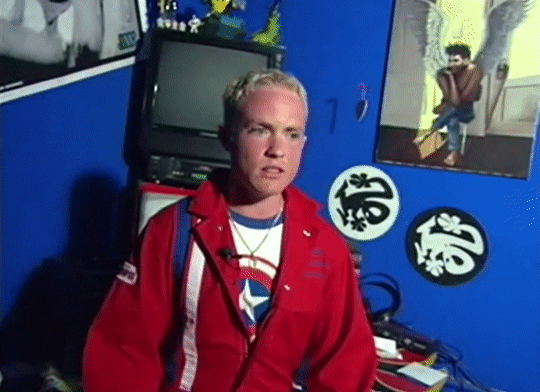
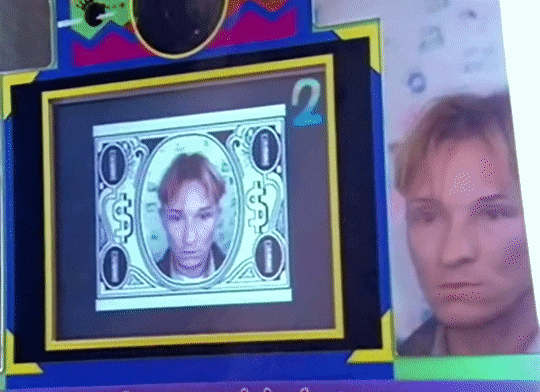
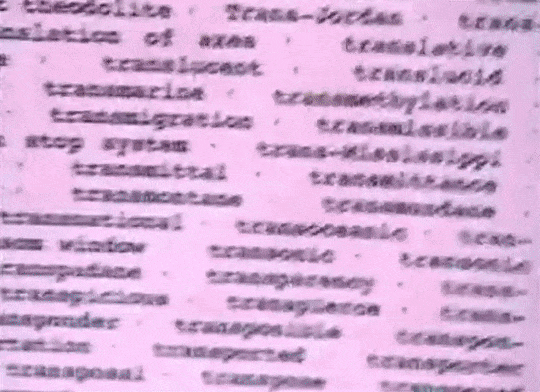
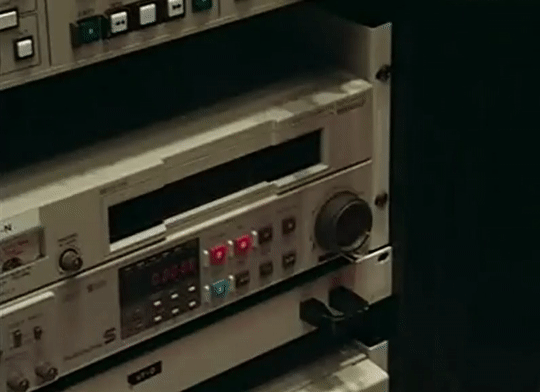
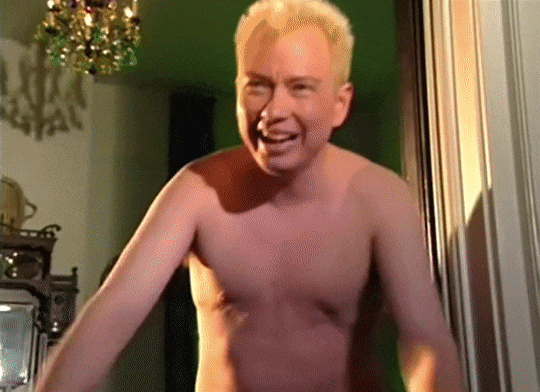
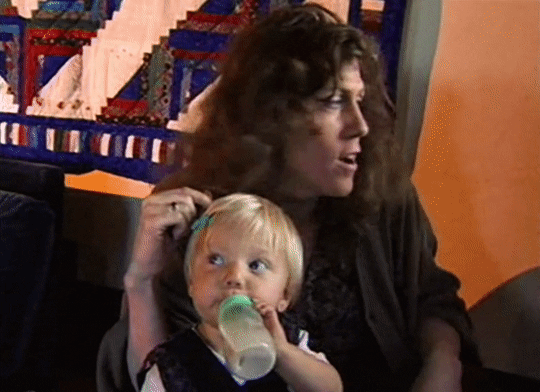

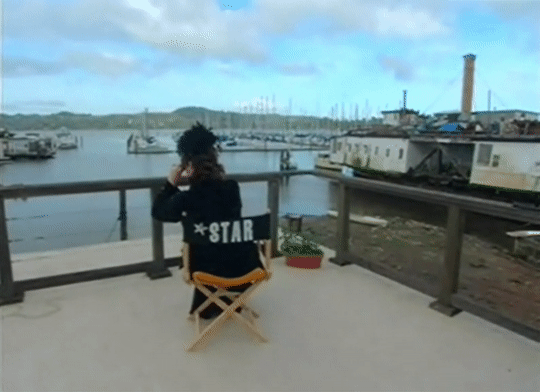
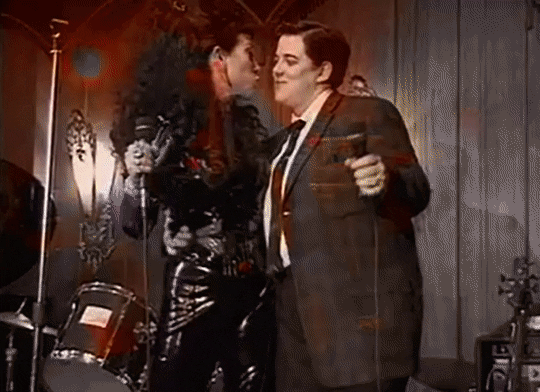
GENDERNAUTS (1999)
dir. Monika Treut
The lives of a group of 'Gendernauts' (trans men Texas, Max, Stafford and Jordy; trans women Sandy and Susan; bisexuals Annie and Tornado; and intersex activist Hilda) all living in San Francisco, California, with the interviews of the subjects taking place in their natural settings and surroundings including their homes, offices, and the streets of the city. Through their lives, both the social and practical changes and decisions necessary for them to endure in order to live their lives as they see fit on the edge of traditional gender roles are explained.
(link in title)
#lgbt cinema#trans cinema#intersex cinema#gendernauts#monika treut#german cinema#lgbt#trans#intersex#transgender#germany#documentary#lgbt movie#trans movies#intersex movies#german movie#lgbt film#trans film#intersex film#german film#queer cinema#european cinema#susan stryker#sandy stone#annie sprinkle#max wolf valerio#hilda viloria#1999#90s#1990s
143 notes
·
View notes
Photo

Robert Daniels mirrors my opinion of the film:
“Neptune Frost,” the dense Afrofuturist film from co-directors Saul Williams and Anisia Uzeyman, holds many resplendent identities at once: It’s a musical; it’s an intersex narrative; it’s a technological allegory espousing anticapitalist and anticolonialist views. It’s a collective dream coated in a blue lacquer dancing on the edge of something unrecognizable, something wholly transcendent. And it arrives with an exceptional display of bravura.
While the logic guiding “Neptune Frost” is difficult to follow, this isn’t the kind of work you can sleepwalk through. It pushes the viewer. There are no wasted plot points, no unnecessary pieces of dialogue or needless landscapes. Every texture contains a million little stories. It is humbling to see two filmmakers so curious, and so creatively playful as to invite messiness and brilliance. In all its so muchness, “Neptune Frost” is a reminder of cinema’s infinite storytelling possibilities.
https://www.rogerebert.com/reviews/neptune-frost-movie-review-2022
13 notes
·
View notes
Text
Eden Knight's story and its affect on me as an black Jewish intersex genderfluid enbian: a very long vent and essay
(Trigger warning: Kimberly Pierce, JK Rowling, TERFs, Alice Walker, Michael Knowles, Matt Walsh, Boys Don't Cry (brief mention), devilish transphobia, devilish intersexism, ableism, SA, murder) (Content warning: medical language)
Note: This essay is only on my personal thoughts and feelings regarding Eden Knight and trans rights and equality and ways this affects me. And even though I'm talking in context of my intersex mascuinity I'm not going to talk over transfems and trans women. This is only based on thoughts and observations that I've had for a while and especially are fitting now.
A month ago I read an essay by Thomas Page McBee, a trans man journalist and TV writer who was giving his thoughts on Kimberly Pierce's movie Boys Don't Cry about Brandon Teena, a movie I watched a few times before. Thomas' essay was titled 𝑯𝒐𝒘 ‘𝑩𝒐𝒚𝒔 𝑫𝒐𝒏’𝒕 𝑪𝒓𝒚’ 𝑴𝒂𝒅𝒆 𝑴𝒆 𝑹𝒆𝒕𝒉𝒊𝒏𝒌 𝑾𝒉𝒂𝒕 𝑰𝒕 𝑴𝒆𝒂𝒏𝒔 𝒕𝒐 𝑩𝒆 𝒂 𝑴𝒐𝒏𝒔𝒕𝒆𝒓 (https://www.out.com/print/2020/2/13/how-boys-dont-cry-made-me-rethink-what-it-means-be-monster); and I couldn't stop thinking about this essay for days afterwards.
Mainly because Thomas's takes were right on and this was something that I relate to. And lately I've been really heavily interested in studying queer subtext and coding theory in horror themed media (cinema or literature). And I'm autistic and I have hyperfixations that include aliens, mermaids, creatures and monsters and lately I always see them as metaphorically symbolic for queer and trans folk as well neurodivergent and disabled people.
And especially for disabled and intersex people (especially disabled and intersex people of color), and I have an overlapping intersection of all these marginalized identities.
Now, I need to share some backstory about myself for context: I found out I was intersex last year. Ever since I was a kid I knew I was different; from why my views in gender and gender expression were always nonconventional, my obsession with androgyny, why I never felt like I could fit in with other women and why I always felt like I had a maleness about me. That and why I had a ton of challenges physically and hormonally; why my periods were heavy and irregular, why I had excess hair on my face and body, why my voice was deep, and why I had a ton of testosterone. All of this pointed to the fact that I have PCOS. So I dealt with that by doing tons of diets and cleanses to alleviate my symptoms. But still that sense of myself being anomalous still remained and I was looking for answers. Then one day I found documents of of medically registered intersex conditions and variations, many listed in two parts. And on the second part of the list, I saw PCOS on the list. And specifically PCOS-related hypoandrogenism. Then recently I discovered that I have comorbidities of tetrasomy X, ovotestis, 45,X/46,XY (X0/XY) mosaicism, Klinefelter syndrome (XXY), Partial androgen insensitivity syndrome (PAIS) (types 5 and 6), XXYY syndrome and XXX XXXX XXY mosaicism and chimerism. All of my biological sex ambiguity is internal, hormonal, reproductive, chromosomal and gonadal. And symptoms that were listed on these conditions are what I still deal with: oily skin. Acne. pattern balding. Irregular menstruation. Deepening of voice. Thick hair growth (hirsutism) - on the face particularly the beard area, limbs, underarm and pubic area. Having autism spectrum disorder. increased breast tissue (gynecomastia) in teen or adult years. having flat feet. broadening of shoulders and chest. shoulders wider than hips. growth of body (underarm, abdominal, chest hair and pubic) and facial hair. larger stature. Experiencing depression and anxiety. Having social and behavioral issues. Displaying impulsive behaviors and having emotional immaturity. Experiencing learning disabilities (reading and language differences). Having attention-deficit/hyperactivity disorder (ADHD). greater development of thigh muscles behind the femur, rather than in front of it. widening of hips. lower waist to hip ratio than adult males, rounder face. enlargement of breasts and erection of nipples.
All of which I had as a kid and still have as an adult. I was stunned and shocked when I read and discovered this. But afterwards, I felt peace and a sense of relief, and now everything started to make sense. And in an ironic twist, in an effort to understand intersex people I find out that I'm one of them. And as of late I've been pondering on so many complex and complicated emotions that I have in wake of my discoveries and which now fuel my passion for addressing these topics.
And the fact that I have ovotestis, high mixed levels of testosterone and androgens in some places and partial androgen insensitivity in other places, mixed chromosomes, numerous mental illnesses, physical male sex traits and genetics, personality disorders and disabilities, that's enough for devilish society to see me as a monster or creature of sorts. Even the fact that I'm a mosaic chimera is enough to qualify me as a monster. Then that + my visible blackness and blasian Jewish identity and culture, is icing on top of a multilayered cake.
And in recent retrospect, just me identifying as an intersex individual would have JK Rowling and radfem TERFs calling me a gender traitor (and me being of color just exacerbates this).
Yet here's my point though: I've learned to love and embrace my otherness and embrace my monstrous queerness. I'm at the point now where I relish in and embrace the way God created me and places I'm in regarding my biological sex and gender identity journey, complexities and all.
Though I have yet to read my copy of Mary Shelley's Frankenstein, I can certainly relate to Thomas's sentiments of relating to Frankenstein and especially in intersecting context with my disabilities as well.
Interestingly, the origin of "monster" is the Latin word monstrum, a "divine omen," a derivative of monere "to admonish, advise, warn, instruct, teach." Which I think is very interesting cause this puts me in the mind of God's angels as how they're originally described in the book of Ezekiel; usually in popular mainstream media we see angels with two wings and long tunics but in Ezekiel 1, this scripture's description of God's design of them are very complex and almost scary and fearsome but also still beautiful and ethereally otherworldly. And I find it very interesting that images, sketches, portraits and paintings of biblically accurate angels are getting increasingly popular among millennial and gen z artists (particularly Jewish, intersex, BIPOC and disabled artists), and that these angels are seen as deconstructive focal points of beauty, even revolutionary symbols, among these communities.
if anything there's a multilayered lesson to take away from this, one of these lessons standing out to me via a comment on YouTube from Soraya M. that I'll never forget: 𝑨𝒏��𝒆𝒍𝒔 𝒍𝒐𝒐𝒌 𝒔𝒄𝒂𝒓𝒚 𝒕𝒐 𝒘𝒂𝒓𝒅 𝒅𝒆𝒎𝒐𝒏𝒔 𝒐𝒇𝒇; 𝒅𝒆𝒎𝒐𝒏𝒔 𝒍𝒐𝒐𝒌 𝒃𝒆𝒂𝒖𝒕𝒊𝒇𝒖𝒍 𝒕𝒐 𝒍𝒖𝒓𝒆 𝒑𝒆𝒐𝒑𝒍𝒆 𝒊𝒏.
Thus, this makes me think of angels and their biblical and artistic metaphorical symbolism in today's context, as many instances of God's people (Virgin Mary, Zechariah, Samson's parents, etc.) reacting in initial fear when they see these angels but these angels then telling them to fear not, showing that these angels ultimately have benevolent and good intentions.
Now of course that's a different category that I wanna keep in respectful context. With regards to people, I think of this artistic and multifaceted lesson regarding today's modern context of people society deems different or outcasts; whether regarding queer and LGBTQ folks, disabled and neurodivergent folks, immigrants, refugees and/or BIPOC people and any intersecting communities and identities, we're just normal people trying to navigate our way in life and everyday world around us. Granted we're humans, though that's the main point; our humanity is what matters.
Now I'm going to go into an instance where I'm gonna get very personal and bring this back to not only my intersex masculinity but also my intersex male brothers; I find it so funny (and disgusting) that Candace Owens can blatantly say she has yet to find trans people that are good people.
Or that JK Rowling can go on a weaponized white woman tears sympathy baiting campaign as a deflection for her transphobia.
Or that Alice Walker, a black woman, can side with and rationalize JK Rowling's devilishly vicious transphobia (though in retrospect, not surprising considering Alice's own virulent antisemitism and antiblack male sentiment).
Or that Matt Walsh can use devilish transphobia as a vehicle to hide behind as a deflection from his own sexism, misogyny, chauvinism, fascism and proponency for abolition of laws regarding age of consent.
I've ran into so many trans and intersex people online and social media that just try to live our lives sharing our hobbies--like art, drawing, food, books, movies and building friendships with each other--that are very lovely people.
Meanwhile Candace promotes all kinds of devilish anti-black hatred towards her own people 24/7, Candace supported Kanye West and Andrew Tate and doesn't bat an eye.
JK Rowling's hateful rhetoric now has TERFs and radfems getting bolder in displaying devilishly vicious and venomous hatred towards trans people, especially trans women and even towards cis women and girls, and particularly biological intersex people that don't agree with them.
Michael Knowles recently blatantly promoted and called for trans people to be genocided, a take so extreme that Christina Buttons, a writer at Daily Wire, had to distance herself from Michael and Matt Walsh and Christina quit her journalism job at Daily Wire (which says a LOT).
Alice Walker is just one prime example of a growing trend of cis black feminists and black radical feminists regurgitating devilish transphobic rhetoric and mindsets, just one aspect of transphobia in black communities.
And yet Alice, Joanne, Matt and Michael and these radfems, TERFs, gender criticals and conservative keep insisting that they have well meaning intentions and are just being protective of children when this is further normalizing devilish fascism and hatred.
Briefly circling back to Kimberly Pierce's Boys Don't Cry, this is still the only mainstream movie that has any transmasculine and trans male rep; and even though BDC now has a very complicated legacy and discourse within trans communities, particularly given Kimberly's initially outdated and cringe TERF/gender critical approach and handling of Brandon Teena's gender identity, though Kimberly seems to have thankfully educated herself in recent years. (And considering Kimberly even had TERF/GC-esque views, this is huge and really stands out as a positive progressive example of allyship. JK Rowling can take more than a few notes from Kimberly!)
All of this being said, with Thomas' Frankenstein references and Soraya's statement in mind, many points still stand:
Brandon Teena wasn't a monster.
Eden Knight wasn't a monster.
Brianna Ghey wasn't a monster.
Cashay Henderson wasn't a monster.
Brazil Johnson wasn't a monster.
Regina Allen wasn't a monster.
Tori Cooper wasn't a monster.
Venus Xtravaganza wasn't a monster.
Eliot Page isn't a monster.
Zaya Wade isn't a monster.
Dylan Mulvaney isn't a monster (and neither is Drew Barrymore for treating Dylan with kindness and decency).
trans women and girls aren't monsters.
trans men and boys aren't monsters.
Enby and GNC people aren't monsters.
Biological intersex people aren't monsters (and we don't need fixing via devilish forcible nonconsensual surgeries).
Lucifer and the way he creeps into the hearts of Candace Owens, John Lotters, Tom Nissens, JK Rowlings, Matt Walshs, Michael Knowleses and Alice Walkers of the world to promote and enact hatred, rape, bigotry, division, dehumanization and genocide is what's monstrousness. And we're not gonna take it anymore. If these devilish bigots want to continue promoting hate towards us, it's time we fight back. We're here, we're queer and we're hard to kill.
And this time around, whatever doesn't kill us better run.
#justice for eden#TransRightsAreHumanRightsTransDayOfVisibility#TransDayOfVisibility#disability#Intersex
5 notes
·
View notes
Text

Back in Florida, having had time to thaw out from our time in Utah, it is time to recollect on my 2024 Sundance experience. This was my second Sundance but it was my first time being able to go in person since the 2022 Sundance was virtual. While that was an unique experience with the virtual spaceship and karaoke, it was a much different experience being there in real life with face to face interactions with other festival attendees. In Michael Newland’s book Indie: An American Film Culture he says “The discourse of independent cinema moves through various institutional channels to form a set of common conceptual frames shared among filmmakers and support personnel, distributors and marketers, cultural gatekeepers such as film festival programmers, tastemakers including journalists and scholars, and many ordinary filmgoers. This makes a community of the different persons and groups for whom indie is a meaningful concept; they form this community around their investment in ideas of what indie is and is not.” I think this best describes how it feels to be at Sundance. Everyone there has either already seen what you have or is about to. This allows you to connect with different people in the lines with you or on the same shuttle. In my review of Sundance from 2022, I talked about how virtual screenings are here to say and that if Sundance couldn’t accept that, they would be left behind. I am glad to say that they heed my warnings because while they did promote in person screenings by not having certain films be available, they still offered online screenings for many films and all of the shorts.
Justin’s Sundance Screenings:
Feature Films:
Freaky Tales
A Different Man
Kidnapping Inc.
I Saw the TV Glow
Ponyboi
Love Me
Little Death
A New Kind of Wilderness
As We Speak
Handling the Undead
The Greatest Night in Pop
Short Films:
Lea Tupu’anga / Mother Tongue
Merman
Pasture Prime
The Lost Season
Thirstygirl
Indie Episodic/New Frontier Projects:
Lolla: The Story of Lollapalooza
Eno
Talks:
Mental Health in Film: Using Narrative Film to Impact Mental Health in Underserved Communities
Feature Films:
My favorite film from all of Sundance was Exhibiting Forgiveness which I saw online since I wasn’t able to get in person tickets. This film really impacted me in the way that it dealt with generational trauma in a black family which is a topic that I am very interested in exploring with my own films. My least favorite film from the festival was Handling the Undead because it seemed like it was supposed to be a horror film because it was about the undead but there was little to no action and it just felt so anticlimactic due to its slow pace. Another film that I watched was Freaky Tales which had a lot of traction due to its star-studded cast and I liked the way that the film seemed to take inspiration from Quentin Tarantino’s film Kill Bill despite not really liking the ways that they tried linking the stories together. A Different Man was interesting because it talked about type casting and exploitation but I felt that it failed to do what it was supposed to. Kidnapping Inc was one of my top five films that I saw at Sundance because while it did have many jokes and funny dialogue it didn’t take away from the real world problems of kidnappings in Haiti. I had high hopes for I Saw the The TV Glow since it was associated with the production company A24 but it let me down in the fact that it felt like it couldn’t choose between Thriller or Fantasy so it just felt sort of lackluster in both genres. Ponyboi was interesting in its focus on intersex people and Love Me intrigued me in the way that it used different mediums to get its message across but also in the story that I felt was similar to the Disney Pixar movie Wall-E. I felt that Little Death was unique in its own way in that it portrayed the characters and how they changed physically or emotionally based on what they were talking about or dealing with. A New Kind of Wilderness was a film that really pulled at my heartstrings in the way the story was told, the film was edited, and the shots were filmed making for a very emotional piece. As We Speak was my favorite documentary without a doubt due to its incorporation of narrative aspects in it that created for a really interesting and engaging story. The Greatest Night in Pop was a good documentary and I liked the backstory about a song that I grew up listening to but for me personally I didn’t like it because it didn’t really have any conflicts in it.
Short Films:
Mother Tongue was probably my most anticipated and I am glad to say that it did not disappoint me due to its great dialogue writing and story. Pasture Prime and Thirstygirl both had really interesting stories that I could enjoy but The Lost Season did not keep my attention at all and I am sad to admit that I fell asleep through it. Merman was in between for me because while I did think the subject was interesting I personally didn’t relate to it and I think that’s part of the reason why I didn’t like it as much as the others.
Episodic/New Frontier/ Talks:
Lolla was the only episodic that I watched and I felt so disconnected from it that I fell asleep during it (to be fair it was late at night) and we left before the second episode. Eno was really good and I found it interesting in how each showing of the film would be different due to the use of ai changing the editing of it everytime. The mental health talk that I attended was really insightful and helped me to curate my voice for my short films.
-Justin Hollis
0 notes
Text
Entrada 04 03-01-24 inspiração (visceral)
A invisibilidade das pessoas negras na área das artes é transversal a todas as subáreas. Como artista-investigador@, pessoa negra e não binária, desafiar a anti-negritude, as definições cis-heterenormativas de identidade de género, expressão de género, assim como a desumanização dos corpos negros, é essencial. São muitos os arquivos de conhecimento africanos (expressão de Felwine Sarr, economista, artista, pensador senegalês, em entrevista comigo num evento pan-africanista sobre arte, teatro, dança e ativismo/emancipação da juventude africana; Passa Sabi, Lisboa, 2020) com origem no continente (e nas diásporas) que têm sido negados, apagados, desvalorizados e apropriados. Quando se fala em arte, ou em média-arte digital, artistas-investigador@s negr@s e projetos/espaços existentes no continente africano são apagados. África é uma placa de petri para ser estudada, usada como um laboratório-vivo numa escala humana e, ao mesmo tempo, estéril?
(anti)Negritude, queerness e everything is political
As minhas referências-inspirações principais estarão sempre ligadas à minha identidade, nas suas várias camadas.
Relembro-me de algumas delas:
Saul Williams (he/him): escritor, poeta, músico, performer, ator, realizador, ativista. Tive a oportunidade de conhecer Williams nos bastidores do FMM (Sines) de 2017 e de conversarmos serenamente. Recentemente, realizou o filme Neptune Frost, um musical sci-fi punk, com a sua visão Afrofuturista. Co-realizado por Anisia Uzeyman, artista e cinematógrafa, Neptune Frost foi filmado no Burundi. O enredo: um grupo de mineiros foge de uma mina de coltan e forma um coletivo anti-colonialista de hackers:
When an intersex runaway and an escaped coltan miner find each other through cosmic forces, their connection sparks glitches within the greater divine circuitry. Set between states of being – past and present, dream and waking life, colonized and free, male and female, memory and prescience – Neptune Frost is an invigorating and empowering direct download to the cerebral cortex and a call to reclaim technology for progressive political ends (Lorber, 2022).
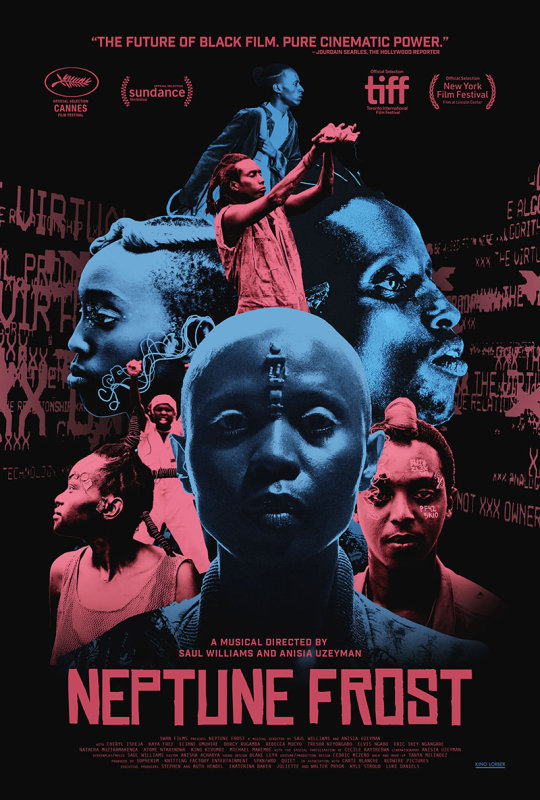
Imagem 1: Cartaz do filme Neptune Frost. Fonte: saulwilliams.com
Amber J. Phillips (she/her): Storyteller, cinematógrafa e diretora criativa - negra, gorda e queer. Como ativista anti-fatness, e não só, identifico-me com o trabalho e/ou objetivos a que se propõe.
Amber J. Phillips is a storyteller, filmmaker, and creative director. She creates world building narratives using warm visuals and vulnerable performances through her lens of being a fat Black queer femme auntie from the Midwest. Amber recently released her first short film, Abundance about the limitations and radical possibilities of identity (amberabundance.com, 2023).
ABUNDANCE IS REAL.
SCARCITY IS FAKE AF.
PAY BLACK ARTISTS.
Do site amberabundance.com.
Ericka Hart (she/they): educadora sexual, black queer femme, ativista e muitas coisas mais, em 2016, expõe-se publicamente após uma dupla mastectomia. Oradora, mestre em Educação e Sexualidade Humana, dá palestras em várias universidades e eventos. Eis um excerto da sua biografia, do seu site (ihartericka.com):
Ericka Hart (pronouns: she/they) is a black queer femme activist, writer, highly acclaimed speaker and award-winning sexuality educator with a Master’s of Education in Human Sexuality from Widener University. Ericka’s work broke ground when she went topless showing her double mastectomy scars in public in 2016 (ihartericka.com).
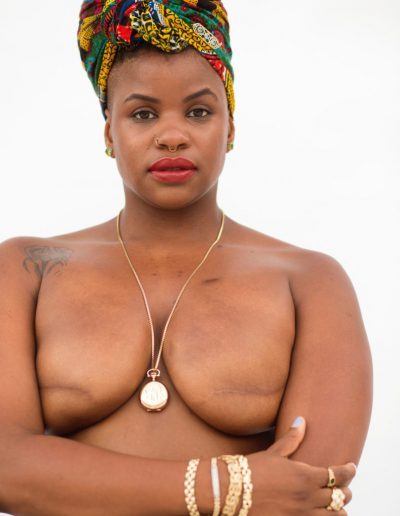
Imagem 2: Ericka Hart. Fonte: ihartericka.com)
Luh Maza (she/her) - Mulher negra, roteirista, diretora e atriz, com experiências na televisão, streaming (Globoplay, Netflix e HBO Max), cinema, teatro e publicidade, encenadora de mais de 12 peças de teatro e a primeira roteirista trans na televisão brasileira. Referência como profissional, artista e amiga. Como gosto de criar telediscos e roteiros, e viscerais, este, de Luh Maza, será sempre uma referência intemporal. Com uma voz (e trabalho) de uma pessoa que também me inspira nas minhas criações (Liniker): 35.
youtube
São apenas quatro (ou 5?) das pessoas que me regulam no meu quotidiano, como pessoa, criativ@, artista e negr@. São fragmentos da minha identidade, logo do meu trabalho.
Referências bibliográficas
Hart, E. (2024). About Ericka Hart. https://ihartericka.com/
Kino, L. (2022). Neptune Frost. https://www.youtube.com/watch?v=acfBNIXovww
Maza, L. (2024). Luh Maza. https://linktr.ee/luhmaza
Phillips, A. (2024). Amber Abundance. https://www.amberabundance.com/
Sarr, F. (2016). Afrotopia. Phillipe Rey.
#inspiração#cinematography#performance#gender identity#blackness#digital art#black art#gender expression#queer#Youtube#music video#artivism
0 notes
Text
"Telephone" by Lady Gaga ft. Beyoncé & "S&M" by Rihanna
By Eloise Fairbrother
youtube
Background
“Telephone” by Lady Gaga featuring Beyoncé was released in January 2010 with the music video (or short film) coming out in March of the same year. The music video was heavily influenced by Quentin Tarantino—the “Pussy Wagon” is the exact truck used in Kill Bill (2003). In addition, Beyoncé’s character is named Honey Bee in reference to Honey Bunny from Tarantino’s Pulp Fiction (1994). It is also a continuation of Lady Gaga’s music video for “Paparazzi” (2009). The video was analyzed by critics for themes and concepts of feminism, lesbianism, and commentary on fame.
Mulvey
In her essay “Visual Pleasure and Narrative Cinema,” Laura Mulvey argues that much media of the past and present serves the male gaze or was created to satisfy masculine scopophilia (the love of looking). This generally forces women to become objectified by the male gaze. In “Telephone,” it appears that Lady Gaga and Beyoncé are the ones who have the power, despite also serving the male gaze. Mulvey claims that the “pleasure in looking is split between active/male and passive/female,” (715) meaning that women are looked at and displayed with their appearance aiming for a strong visual and erotic impact. Despite this, their revealing outfits and appearances act as a distraction for the male characters, especially in the diner scene, in which Beyoncé attempts to poison her boyfriend.


With Mulvey saying that “Traditionally, the woman displayed has functioned on two levels: as erotic object for the characters within the screen story, and as erotic object for the spectator within the auditorium” (716), it is evident that both Gaga and Beyoncé are dressed for this erotic impact in the music video. The two women use the male gaze against the male characters in the video, and use their eroticism to their advantage. They also use it against female characters, when in the prison’s exercise courtyard, Gaga makes out with an inmate and uses it as an opportunity to steal her phone. Mulvey claims that “mainstream film coded the erotic into the language of the dominant patriarchal order” (713), which means that women in media must play into the male fantasy in order to be fully seen. With this exploration of lesbianism, along with the incredibly revealing outfits from Gaga, Beyoncé, and the inmates at the jail, it is clear that (even if unintentionally, though that is unlikely) this music video gained the attention of men, therefore conforming to the male gaze. However, because it is evident that this would occur, Gaga and Beyoncé end up harming the men in the video to display how they can still be dangerous even if they are dressed for the male gaze meaning they use it to their advantage.

Additionally, Mulvey claims that the female “lack of penis [implies] a threat of castration and hence unpleasure,” (718) which men attempt to escape through means of devaluation, punishment or fetishistic scopophilia. At the beginning, when Gaga is put in the jail cell, the guard says “I told you she didn't have a dick,” which not only addresses the rumors about her being intersex, but also relates to Mulvey’s comments. Because Gaga does not have a penis, she is considered to be a threat, which is why she is in jail in the first place. Later on, this proves to be true when she and Beyoncé kill everyone in the diner.
hooks
Beyoncé has the right to “gaze” or more so observe her surroundings without punishment, as hooks said in her essay “Oppositional Gaze: Black Female Spectators,” though it was not always that way. hooks claims that because this right to look was oppressed for a long time, in both real life and in the media, Black women would gain the “rebellious desire” to gaze, or what hooks would call “The Oppositional Gaze.” Beyoncé’s entire character in the music video acts rebellious, with her attempts to kill her misogynistic boyfriend, as well as trying to escape the police.

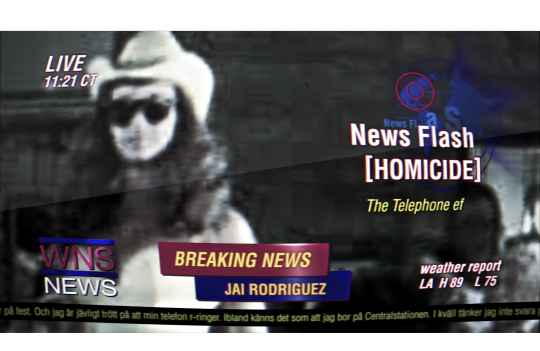
hooks essentially claims that cinema denies Black women narrative agency, yet at the beginning of the music video, Beyoncé is the one to bail Gaga out of jail. This is not to say that white women are constantly oppressed by cinema and society, rather it shows irony that the Black woman in this scenario is the one who has more freedom over the white woman. Beyoncé has the ability to free Gaga, while Gaga’s only hope of getting out of jail is through Beyoncé. Beyoncé is also the one ridiculing Gaga when she gets in the car after bailing her, saying “You’ve been a very bad girl.” hooks claims that Black women act as the opposition for the white women in the media, which can be seen in “Telephone,” primarily in the jail scene, when Beyoncé and Gaga have contradicting amounts of freedom.
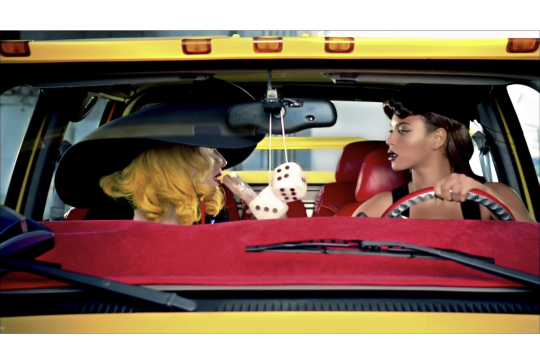
Lourde
In her essay “Age, Race, Class, and Sex: Women Redefining Difference,” Audre Lourde claims that “history conditions us to see human differences in simplistic opposition to each other,” (854). Essentially, it is not our differences (race, gender, sexuality, etc.) that separate us, but rather our refusal to acknowledge them that separate us. Additionally, Lourde says that women have been encouraged to recognize only one area of human difference as legitimate, which are the ones that exist between women and men. Gaga and Beyoncé take a more ironic route with this one when they are in the diner and the kitchen. A common stereotype for women is that they are housewives and their only job is to serve men. In the segment of the video called “Let’s Make a Sandwich,” Gaga follows this stereotype but ultimately sabotages all the men who assume she will follow this stereotype. Her and Beyoncé work together to kill everyone in the diner by poisoning the food. They then go further in pushing these stereotypes by wearing American flag outfits after killing everyone. Their apparent nationalism and celebratory dancing after murdering people appears to be an inherently masculine thing for the two women to do, in the sense that it is a “manly” thing to do to be very violent in the name of protecting the country. In doing this, they are recognizing and acknowledging differences between them and the stereotypical man. Ultimately, the irony within the video of the two women appearing to follow stereotypes but then going against them in the end is evident.
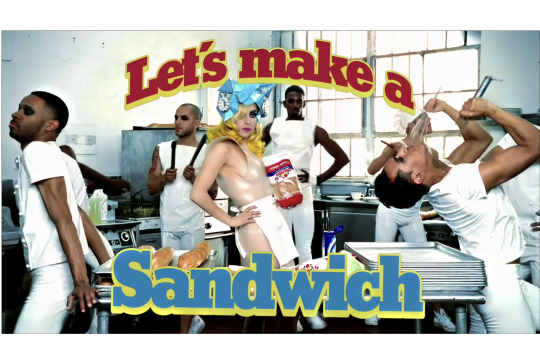
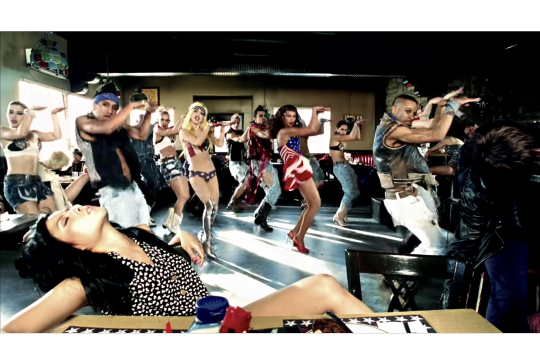
youtube
Background
"S&M" by Rihanna was released in January of 2011 and was the fourth single on her album Loud (2010). In relation to the sexual themes of the song, Rihanna told Spin, “I don’t think of it in a sexual way, I’m thinking metaphorically. It’s more of a thing to say that people can talk….people are going to talk about you, you can’t stop that. You just have to be that strong person and know who you are so that stuff just bounces off.” With the song’s central themes being about sadomasochism activities, it was heavily criticized for having overtly sexual lyrics. The original music video featured a fully nude Rihanna, but that has since been removed, as the video was flagged and banned in several countries.
Mulvey
With the lyrics being sexual, it is evident that the music video would be inherently sexual. Therefore, not only is Rihanna dressed in a revealing way throughout the music video, but so are the people around her. For example, the people attempting to interview her are wearing ball gags, an object used in BDSM. Rihanna’s way of dressing appears to be to satisfy the male gaze, however there is irony within her outfits. In the scene at the house, Rihanna wears a nude, somewhat see-through dress, yet has a man on a leash like a dog, therefore reducing him to an animal.

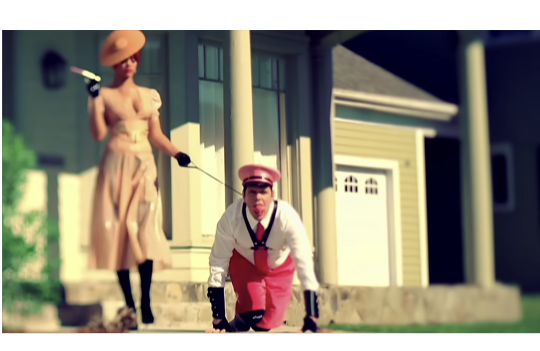
At the beginning, Rihanna is pulled in front of many interviewers who harass her for pictures and comments. She is placed inside plastic, which not only comments on how suffocating fame can be at times, but also how she is made up like a doll for men to gawk at. Being dragged around by men in the beginning sets up Rihanna’s redemption arc as she ultimately takes their positions later on by being sexually dominant.

Once again, the irony is not lost as Mulvey says that “Woman then stands in patriarchal culture as signifier for the male other, bound by a symbolic order in which man can live out his phantasies and obsessions through linguistic command,” (712). Rather, it seems as though Rihanna is living out her own fantasies and taking control of her sexual freedom in place of a man controlling it. She is the one who has linguistic commands through the lyrics, especially in the scene in which the man is tied to the bed as she does what she wants to him. Mulvey also writes that “the male figure cannot bear the burden of sexual objectification,” (716) yet this is exactly what occurs in the music video. Rihanna places sexual objectification on herself with her outfits and the lyrics, but because the song is about her gaining sexual freedom, she also places it on her sexual partners throughout the video. Rihanna places herself in the shoes of a man, due to her dominant, commanding nature. Everything in the music video is for her gaze as a woman, meaning she turns the male gaze into her own personal gaze. While Mulvey says that the cinema provides a voyeuristic process of objectification for men (719), Rihanna becomes the voyeur. She ultimately becomes the scopophile and therefore introduces herself as having more power than the men who sexually submit themselves to her.
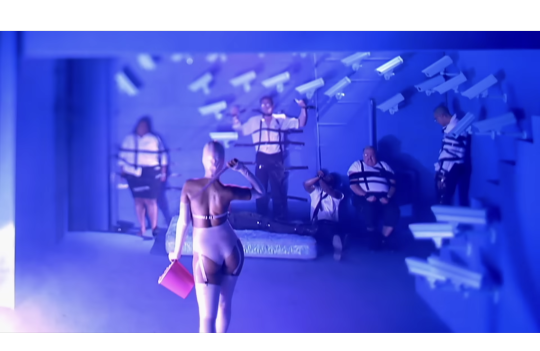
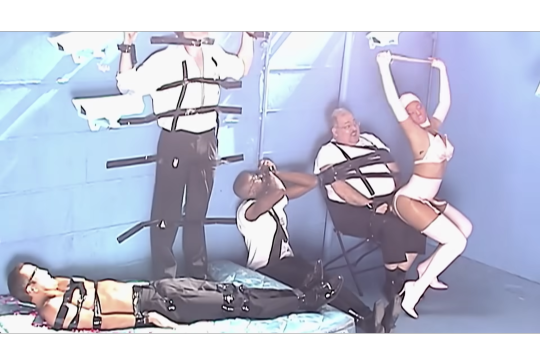
hooks
Throughout history, (mostly white) men have had the ability to look, therefore meaning they also had the ability to judge and objectify others, with the “other” being women. White men and women both have the ability to look at Black people, especially Black women, in a judging way. In “S&M”, Rihanna comments on this in the beginning when she is wrapped in plastic and yelled at by men and women alike. While not all of them are white, it still signifies a Black woman being stared at and scrutinized under a harsh microscope by others. This is also explicitly seen when she sits in the room by herself surrounded by the security cameras, all pointed at her. While it is unclear who specifically is watching her, it could be considered the audience watching her through the cameras and henceforth judging and objectifying her, as she is wearing yet another revealing outfit.
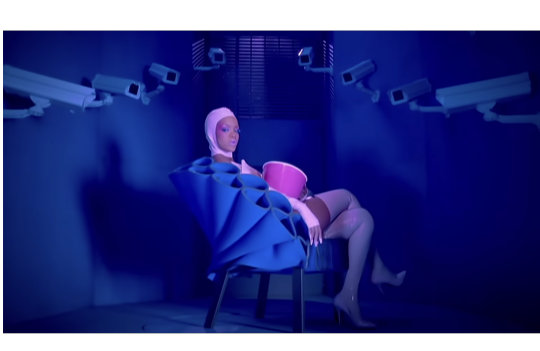
When hooks says that “Spaces of agency exist for black people, wherein we can both interrogate the gaze of the Other but also look back, and at one another,” (308) it can be related to the Black men who pull Rihanna to the front of the crowd. They also allow themselves to stare at Rihanna and to objectify her in the same way that white men and women do. Rihanna ultimately flips this overall narrative of people staring at her, the Black woman, when she takes the position of men. Instead, she becomes the one who looks, and she does so with the “rebellious desire” that hooks mentions. While the video is not explicitly about her race, it still plays an important factor in the message of the music video, along with the power dynamic displayed between her and everyone watching her.
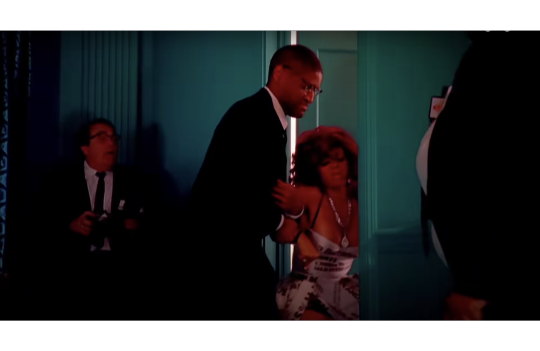
Lourde
Audre Lourde says “Much of western European history conditions us to see human differences in simplistic opposition to each other: dominant/subordinate, good/bad, up/down, superior/inferior,” (854) with the two oppositions Rihanna addresses being man and woman, along with dominant and submissive. These oppositions help her flip the narrative on the expectations of what she should be as a Black woman. She is overall expected to be submissive towards men, yet she flips this narrative, as she becomes sexually dominant and is the one who makes the rules. In this way of addressing the differences between herself and the men she has control over, along with her purposely enhancing these differences, she is conforming to Lourde’s argument. Lourde argues that it is more dangerous that we don’t recognize our differences, so Rihanna recognizes them and also ensures that her sexual partners understand and acknowledge them in the same ways. Additionally, while it appears that Rihanna adheres to the housewife stereotype in the scene at the house, she ends up having complete control over the man who acts as her dog. It proves the power she has over men and how she is acknowledging their differences in a way that makes it seem as though she is conforming to the stereotypes.
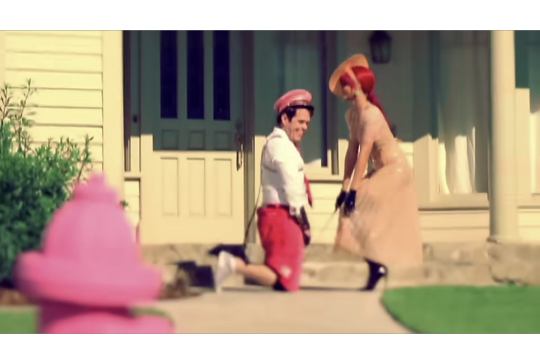
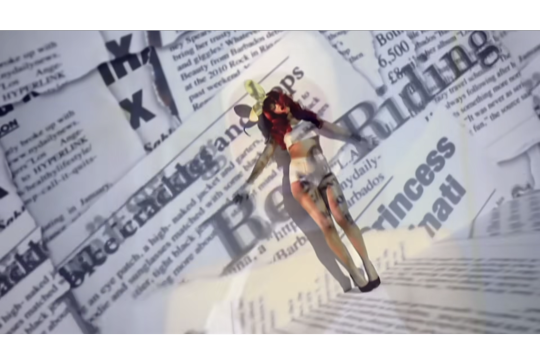
Discussion Questions
Even if a woman uses the male gaze against a man, does the man still have the power? Why or why not?
How do Beyoncé and Rihanna challenge the notion that cinema denies Black women narrative agency?
Do you think most modern media is catered towards satisfying the male gaze? Why or why not?
0 notes
Text

Excited to share the official trailer for "Only Love Matters", the #film I wrote for KQ Movies Ltd, which is the first feature film in the history of cinema set in Britain and featuring lead intersex characters. "Two women, two timelines, two generations, and always the one thing that truly matters: Love."
youtube
That is not all though, the film is having its world premiere this week in Marbella Spain, and its UK Premiere in BFI Southbank, London on the 27th of October 2023.
#trailer#screening#premiere#indiefilm#britishfilm#screenwriter#iannisaliferis#producer#driramqureshi#director#drkamranqureshi#kqmovies#britishcinema#ukfilms#intersex#IntersexAwarenessDay#onlylovemattersmovie
0 notes
Text
The film Under the Sky of Damascus by exiled Syrian filmmakers Heba Khaled, Talal Derki and Ali Wajeeh won the International Competition Golden Alexander at the 25th Thessaloniki International Documentary Festival, TiDF.
Under the Sky of Damascus follows five young Syrian women, Farah, Eliana, Inana, Souhir, and Grace, who want to produce a play based on individual women’s stories.
They record stories from actresses to factory workers to stay-at-home mothers; what emerges are stories of abuse, blackmail, and even imprisonment at the hands of husbands, brothers, fathers, employers and powerful officials who use their patriarchal power to keep them trapped without access to justice.
The film has secured a place in the selection shortlist for the Academy Award for Best Documentary Feature Film.
The awards ceremony took place under the shadow of the deadly train accident on February 28 that claimed the lives of 57 people. The opening and closing ceremonies and all festival events were canceled as a sign of respect for the victims.
“In these difficult moments we experience, wishing to provide the audience with the chance to discover Greek films that touch upon issues and concerns shared by all of us, we extend the time window for the online screenings of the films taking part in the sections Platform and From screen to Screen (online.filmfestival.gr),” a press release issued by the TiDF said.
The Silver Alexander, which is accompanied by a 5,000-euro cash prize, went to the documentary Who I Am Not by Tünde Skovrán, which is about a South African beauty queen who plunges into an identity crisis after finding out she is intersex. A Special Mention was bestowed on Narrow Path to Happiness by Kata Oláh, a film about a gay gypsy couple living in Hungary.
TiDF was one of the first film festivals to host a Podcast Competition section, exploring the affinities of this new genre with cinema. The Best Podcast Award, accompanied by a 2,000-euro cash prize, was won by From a Wonder to a Trauma by Constantinos Vrettos, about a mother who lost her child.
0 notes